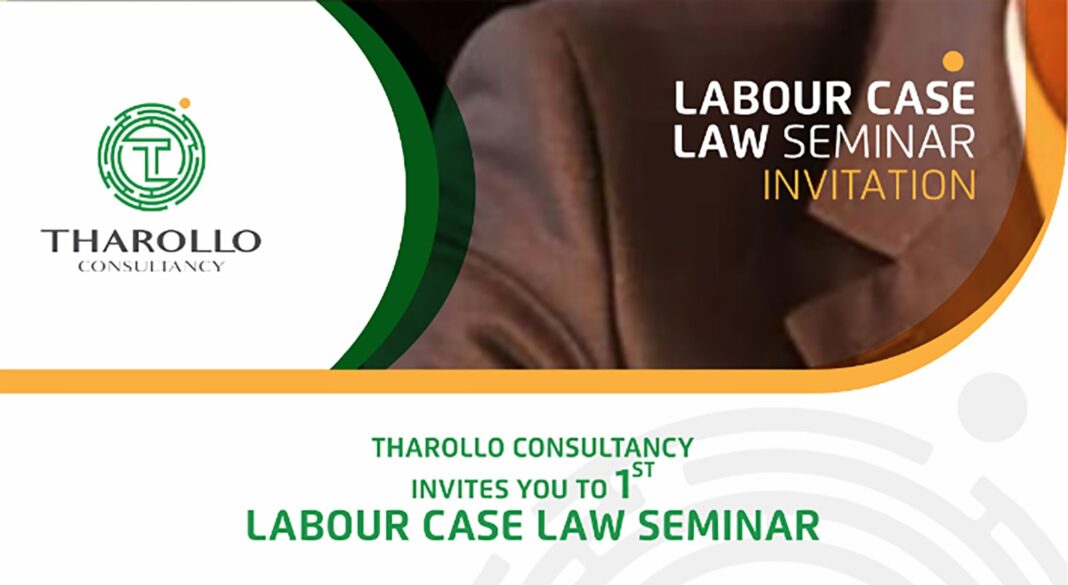In the last publication we gave a deep thought on the sexual harassment in the workplace. We realised that acts of these nature do not just occur where relationships are calm and there is no violence involved.
We encouraged employers to develop and implement policies and procedures geared towards creating workplaces that are free from sexual harassment. Respect to one another’s integrity and dignity, their privacy and right to equality in the workplace should be cultivated at all times.
Most of the time acts of sexual harassment would emanate from violent behaviors coming from other employees. In this issue, we discuss such occurrences and how they can be eliminated in workplaces.
Violence and harassment at work have potential to inflict harm that extends to workers’ private and family lives, not only their working lives. While the existence of physical violence at work has been recognized for a long time, the existence of a psychosocial violence has been long under-estimated and is only now receiving attention.
Verbal violence, physical violence, sexual violence, behavioural violence are common elements of acts of violence against a worker, often caused by deterioration of interpersonal relations as well as organizational dysfunctions. Workers at special risk include:
- Those who work alone.
- Those in contact with the public.
- Those handling valuables and cash.
- Those working with people in distress.
- Those involved in surveillance or security.
- Those who work in conditions of special vulnerability.
One aspect of psychosocial violence is harassment at work or mobbing. Like fatigue and stress, it not only degrades working conditions for victims involved but it also impacts on life outside work as well.
At the international level, the United Nations General Recommendation 19 to the Convention on the Elimination of all Forms of Discrimination against Women (CEDAW), defines sexual harassment as including: “such unwelcome sexually determined behavior as physical contact and advances, sexually-coloured remarks, showing pornography and making sexual demands, whether by words or actions. Such conduct can be humiliating and may constitute a health and safety problem; it is discriminatory when the woman has reasonable ground to believe that her objection would disadvantage her in connection with her employment, including recruitment or promotion, or when it creates a hostile working environment.”
There are three main types of sexual harassment: physical, verbal, and nonverbal sexual harassment. For an action to be considered sexual harassment it must meet the following criteria:
- The action is related to sex or sexual conduct – include unwanted physical contact, ranging from touching to sexual assault and rape, and includes a strip search by or in the presence of the opposite sex.
- The conduct is unwelcome, not returned, not mutual – include unwelcome innuendoes, suggestions and hints, sexual advances, comments with sexual overtones, sex-related jokes or insults or unwelcome graphic comments about a person’s body made in their presence or directed towards them, unwelcome and inappropriate enquiries about a person’s sex life, and unwelcome whistling directed at a person or group of persons.
- The conduct affects the terms or conditions of employment, in some cases including the work environment itself.
- Non-verbal forms of sexual harassment – include unwelcome gestures, indecent exposure, and the unwelcome display of sexually explicit pictures and objects.
- Quid pro quo harassment – occurs where an owner, employer, supervisor, member of management or co-employee, undertakes or attempts to influence the process of employment, promotion, training, discipline, dismissal, salary increment or other benefit of an employee or job applicant, in exchange for sexual favours.
- Sexual favouritism – exists where a person who is in a position of authority rewards only those who respond to his/her sexual advances, whilst other deserving employees who do not submit themselves to any sexual advances are denied promotions, merit rating or salary increases.
Sexual Harassment in workplaces has been addressed decisively through the drawing up of a Code of Good Practice. As in South Africa, which has adopted the Code of Good Practice on Sexual Harassment in Workplaces, Lesotho also has a similar Code under the Labour Code and draft guidelines on Prevention of and Protection from Sexual Exploitation, Abuse Violence and Harassment under the Public Service Act . Hopefully this will be turned into a fully-fledged Code of Good Practice. The Code is aimed at eliminating violence and sexual harassment in the workplace. It provides for appropriate procedures to deal with the problem and prevent its recurrence. It encourages and promotes the development and implementation of policies and procedures that will lead to the creation of workplaces that are free of sexual harassment, where employers and employees respect one another’s integrity and dignity, their privacy, and their right to equity in the workplace.
Lesotho however, has the following legislations which can also be used to deal with violence and harassment in workplaces.
- Children’s Protection and Welfare Act 2011 – makes provision for protection of children against abuses of employment nature such as working under sexually hazardous conditions; awkward hours and exposure to sexual harassment prone work when the child is below the age permitted by law;
- Sexual Offences Act 2003 – makes provision for protection of children against acts of sexual nature aimed at inducing employment or providing reward or gain along those lines.
- Anti-Trafficking in Persons Act 2011 – prohibits and punishes all forms of trafficking including for purpose of employment or rewards of employment nature and requires protection and support measures for victims of trafficking.
With the ratification of the Convention on Violence and Harassment we will keep reminding employers to refer to it and gather guidance on how best to deal with Violence and Harassment in their workplaces.
We are eager to hear from you on this and other articles presented on this forum. Please send your inquiries and contributions to Tharollo Consultancy at info@tharollo.org.ls or call us on 52512345. Our Facebook page is Tharollo Consultancy.









